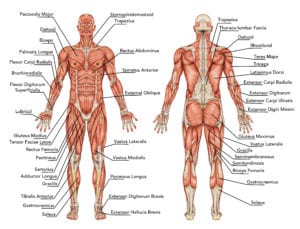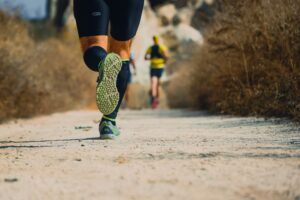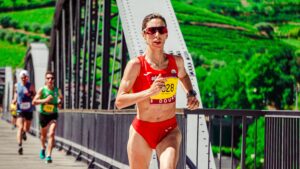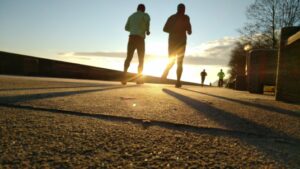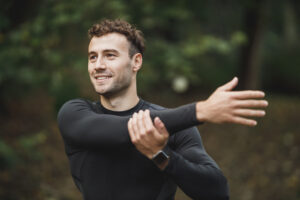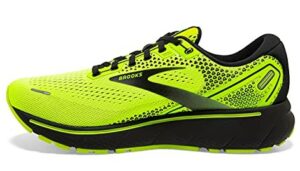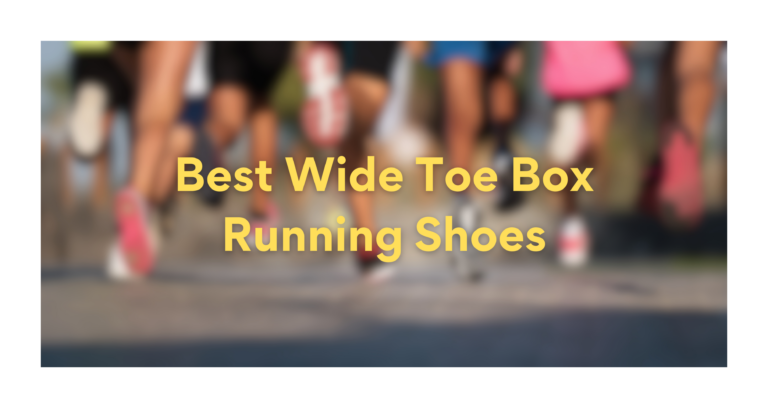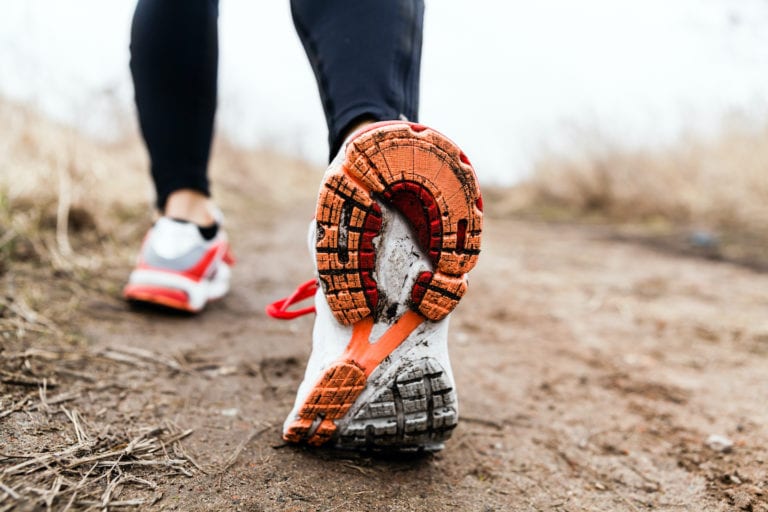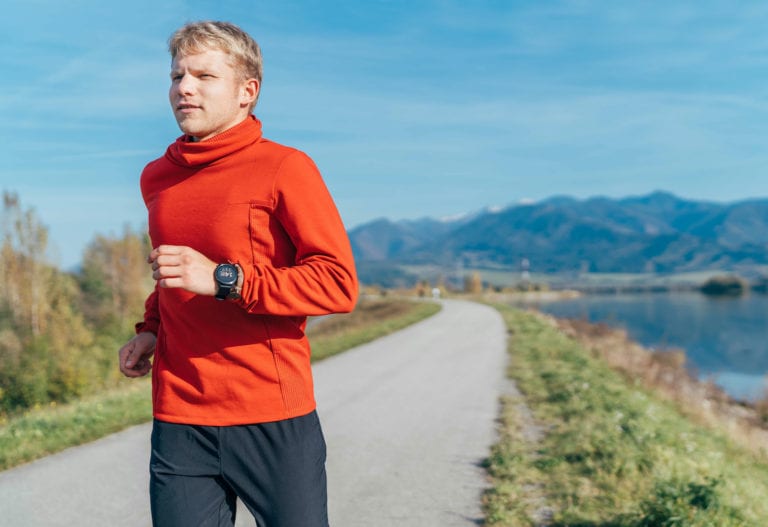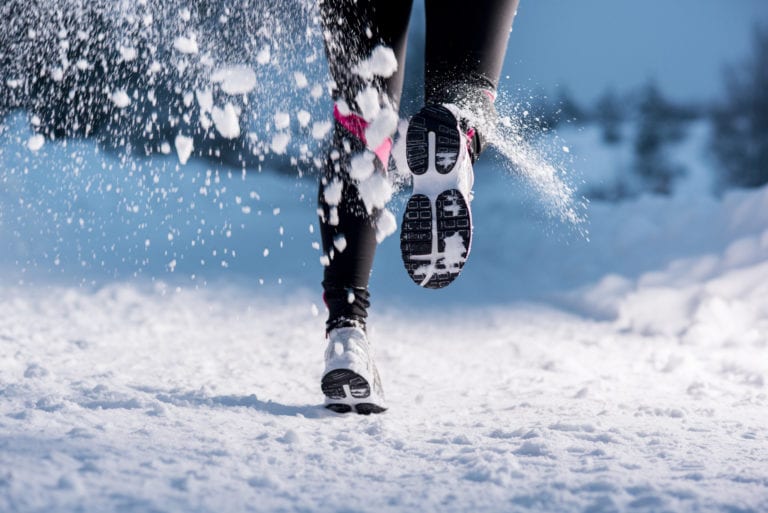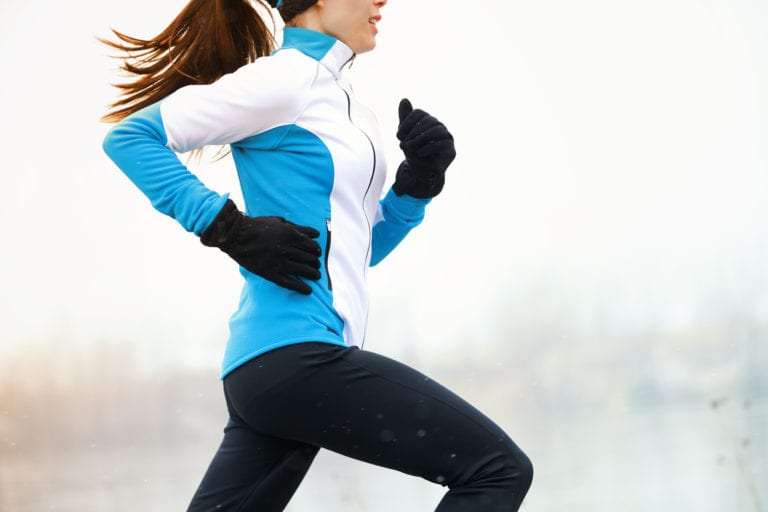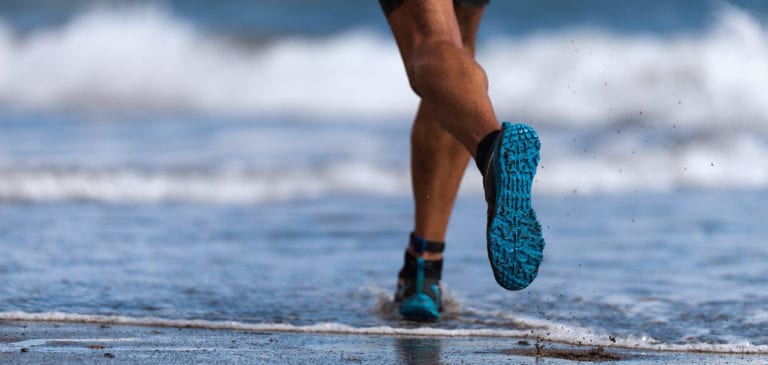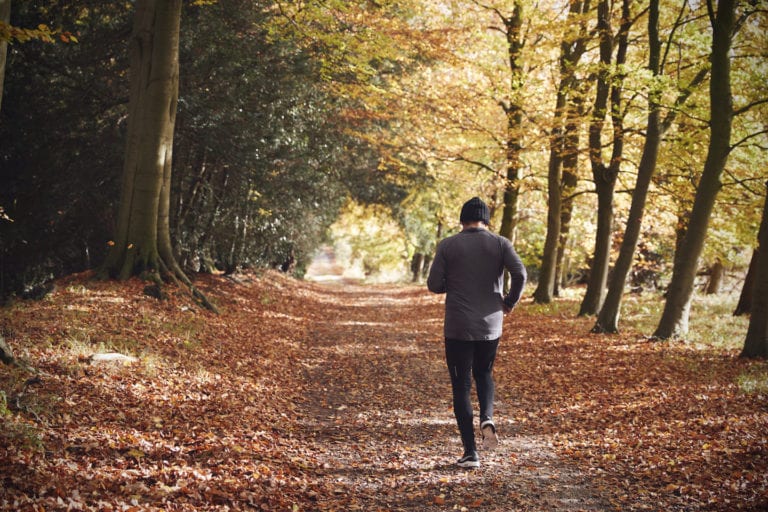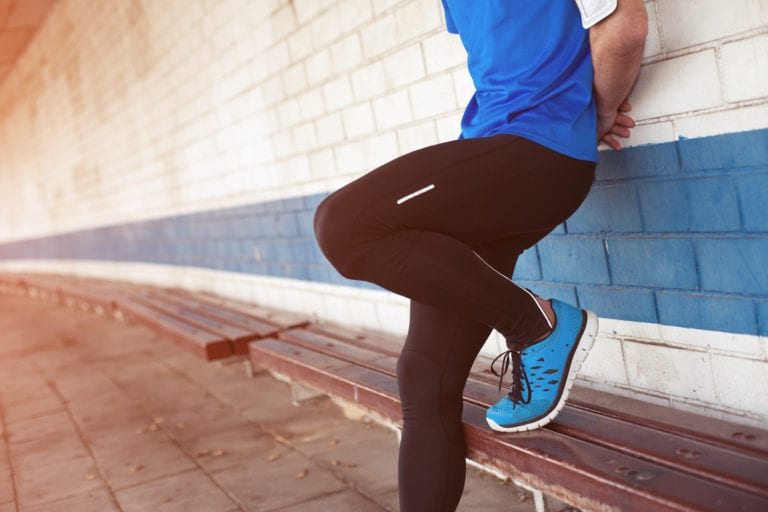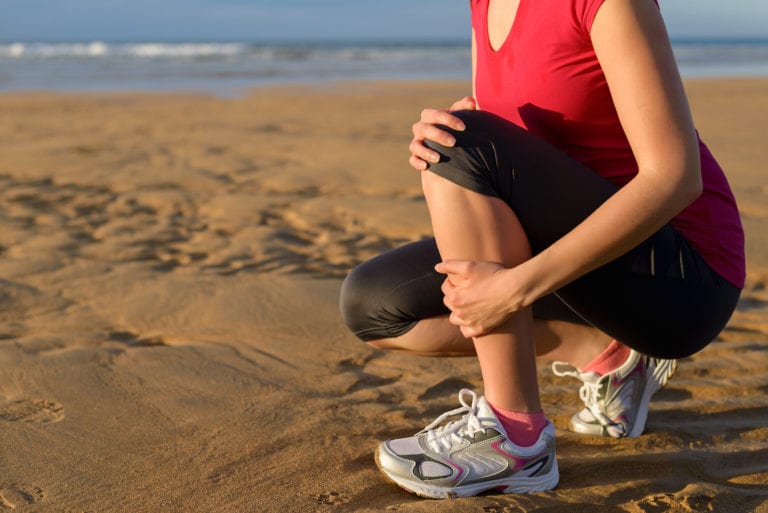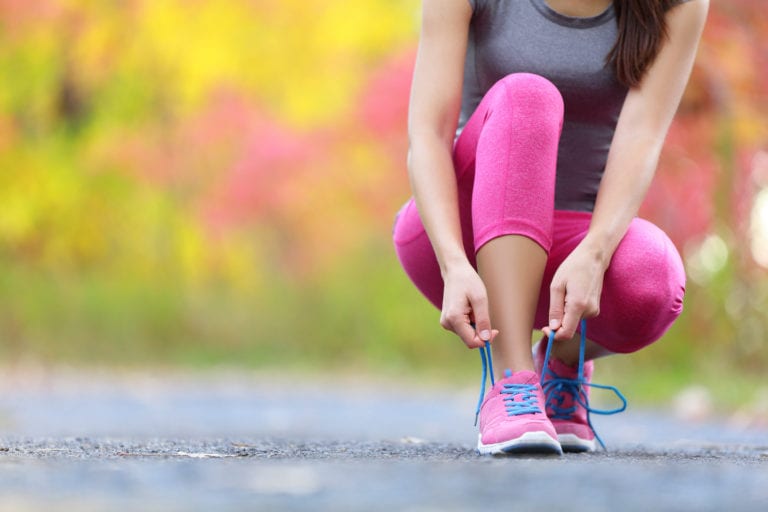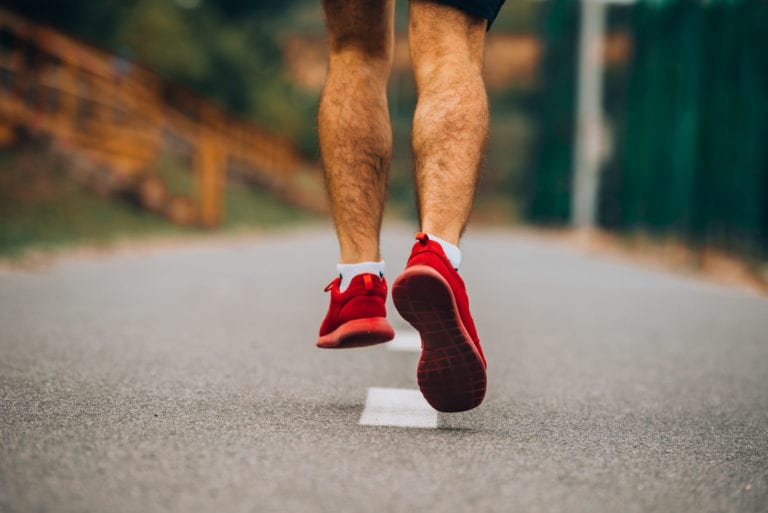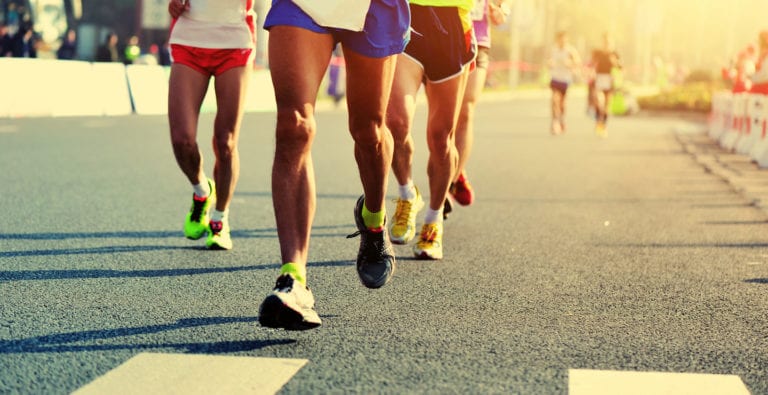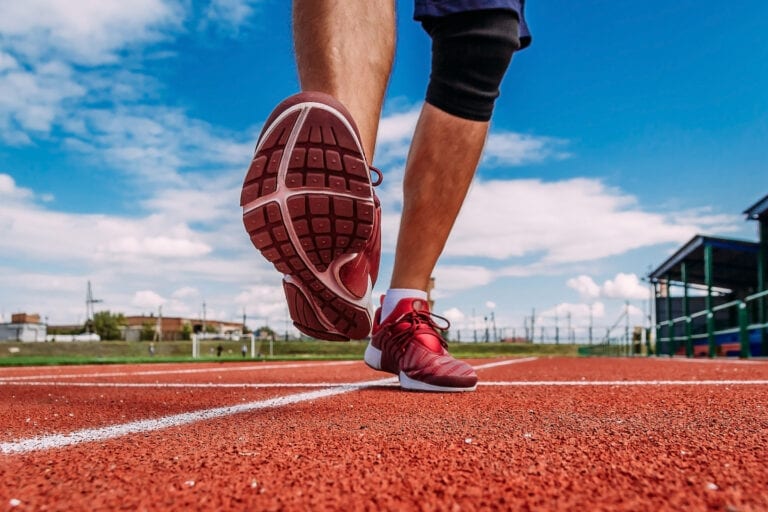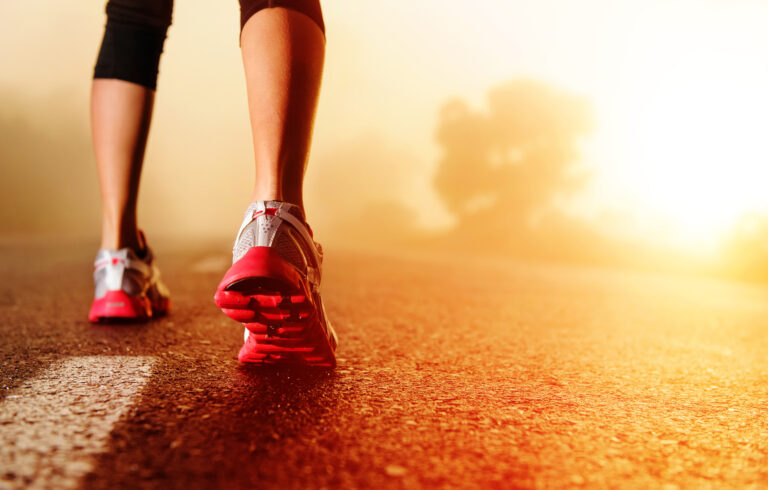The concept of barefoot running is simple: you were born barefoot, so your body will respond better to less cushioning and freedom from the grip of modern shoes. While this theory suggests that human feet can feel healthier and stronger from running and walking shoeless, or at least in minimalist shoes that interfere the least with your gait, there could also be drawbacks. When it comes to running, there are arguments for and against in almost equal measure.
What is barefoot running and should you try it? There are certain aspects of minimalist running shoes and the motions of barefoot running that yield potential benefits to runners, as well as some drawbacks to be aware of.
Read on to find out:
The difference between running in shoes and barefoot running;
How to become a barefoot runner;
Benefits of running in minimalist and/or barefoot shoes;
How to manage injury risk.
Running in shoes vs. running barefoot
The concept of barefoot running isn’t actually synonymous with not wearing running shoes, or any shoes at all, when you run. There are a number of so-called minimal shoes, that reduce almost any interference with your natural foot strike pattern, providing no arch support or cushioning, which can qualify as barefoot running, too. At the extreme end of the spectrum, we find the Tarahumara runners made famous by books such as Christopher McDougall’s “Born to Run,” who wear sandals and loin cloths and don’t bother with any of the modern running paraphernalia, despite covering hundreds of miles with ease.
So, what’s the difference between running in shoes and barefoot running? There will be clear differences in how much space your toes have to splay out and conform to a natural foot shape, the cushioning levels, and the amount of protection from the elements you will get with modern shoes. However, the biggest difference is how your foot strikes the ground.
Almost any runner wearing a modern running shoe tends to strike the ground with their heel first, unless they’ve worked on their running gait specifically. Heel striking isn’t necessarily a bad thing, but it does generate a much higher force as you land, which then spreads through the body and can generate injuries such as knee pain, stress fractures, or Achilles tendonitis.
When you’re running in non conventional running shoes with very minimal impact on your foot landing, you will naturally strike the ground first with the balls of your feet. This generates three times less impact, influences your running cadence, and can yield great benefits for distance runners. Increasing cadence has been linked with increasing pace and speed, reducing injury risk, and having a better running form altogether.
You may be wondering why this difference in foot strike pattern exists: according to research, modern running shoes offer our feet too much support. Whether supporting our arches (you will have heard of over pronating and under pronating – the two patterns that the running shoe industry has been warning against for years) or giving us perhaps too much cushioning, running shoes prevent us from developing foot strength naturally. As a result, our foot muscles don’t have to work as hard and become more dependent on the shoes. In turn, as soon as your shoes’ cushioning or support wears off, you’ll need to buy more shoes to stave off an injury, and the cycle goes on this way.
How to become a barefoot runner
Ditching your modern footwear doesn’t mean sprinting straight into barefoot shoes or going without them altogether, however. Even if you believe that barefoot running is for you, you should approach it systematically and progressively, just like when you start a new training program.
Firstly, using minimalist running shoes will put more pressure on your calves and feet. They’ll need to accommodate a new pattern of movement and will need to be strengthened accordingly. If you’re serious about switching to minimal shoes, consider complementing your running with strength and conditioning to support this.
Secondly, start slow and gradually. Don’t move into barefoot running suddenly and completely. Start with run/walk sessions where you alternate between jogging and walking at a brisk pace, gradually building up to longer distances. It would be a good idea to alternate between your old running shoes and barefoot shoes in the beginning, and then slowly move from those minimalist running shoes to running completely shoe-less, if this is your end goal.
Check with your doctor. If you have diabetes or foot-related issues, you should wear shoes, so choosing to go for minimal footwear will be the better option.
Develop new skills. Not only will you need to work on your strength and stability to be able to run in barefoot shoes, but you are also exposing yourself to the chance of injury simply from the environment. For example, pebbles and stones will hurt your feet, while in an urban setting you may come across glass or other debris that could be dangerous. These are some of the less common running injuries, since fewer people run barefoot, but they’re nonetheless important hazards to learn to spot and protect yourself from.
Benefits of barefoot running
Through various studies comparing barefoot and shod runners, we’ve been able to ascertain that, often, those who run in minimal shoes or barefoot get injured less often. For example, a 2016 such comparison found statistically fewer overall, diagnosed, musco-skeletal injuries per runner in the barefoot group. However, the mileage run wasn’t comparable and more barefoot runners had injuries to the plantar surface of the foot, as would be logically expected.
Therefore, are there benefits to going minimal / barefoot, and in what context?
Smaller collision force
Running with a forefoot strike has been proven to reduce the amount of force you land with and impact on your joints and tendons. There is an argument that the heel strike we adopt when running in conventional running shoes is caused by the way the shoes are built. Heel striking has been associated with more injuries, especially in some studies where such shod runners were more likely to experience running-related knee problems.
However, although a reduced impact from landing on your heels and moving towards mid- and front-foot strike could be better for your health in the long term, there is no definitive data to point to this being a “better” running technique, or one less prone to injury. And there’s no direct correlation between the effects of footwear and the collision force that can demonstrated conclusively.
Lower ground contact time
Midfoot and forefoot striking is going to lead to less time spent on the ground, simply from the difference in mechanics when compared with heel striking. When you land heel first, you tend to then roll your whole foot forward and spend more time on the ground, before you push off again. When you land more towards the middle and front of your foot, your center of gravity is right above your point of landing and this allows you to push off quickly, without spending too much time on the ground.
The consequences of this are a better running form, improved running economy, higher efficiency and an increase in cadence. All these point to running better and stronger.
Improved running economy
This is connected to less time spent on the ground, landing more lightly and generally having more of a “spring in your step.” These are all elements of a better, more streamlined and faster running form, which has been linked to avoiding the typical kinds of injuries running complain of (knee injuries, Achilles tendonitis, etc.).
Running economy is an important concept, especially for middle and long distance runners. It refers to the energy demand of running at a given speed, under your top end. This is generally measured by comparing speed oxygen uptake, so the lower amount of oxygen required to maintain a speed, the better the running economy. While these are lab tests that high-performance athletes will complete, recreational runners benefit from knowing that working on balance, strength and conditioning, high-intensity interval training and endurance will all improve running economy over time.
Barefoot running shoes may contribute to a streamlined running form that eventually adds to your running economy, but they will not be the decisive factor in this.
Better balance and proprioception
One thing that barefoot running shoes and generally barefoot running can definitely be linked to is an improvement in balance and proprioception. When you run in traditional running shoes, because the body benefits from support such as for the arch of your foot, your body’s muscles are not activated in the same way as barefoot running does.
Shoeless runners have to engage their core and activate smaller muscles in their feet, ankles, legs and hips, that contribute to an increase in balance. This can be especially beneficial for off-road running, with more variable terrain, but it will also benefit road runners, reducing their risk for injury and improving their posture.
Proprioception – your awareness of the space around you as you move – is an important element of running form. It can be influenced by your shoe type because, for example, wearing highly cushioned shoes will remove much of the feel of the terrain under your feet, leading to a different perception of it. But it’s also more than that: it includes your limbs, weight, and center of gravity. Better proprioception allows you to move more efficiently in different, changing terrain. By modifying the way you land and how your body’s center of gravity relates to the position of your feet, you will be improving your proprioception thanks to minimal footwear running.
A more natural gait
Overall, as running in barefoot or minimalist shoes takes us closer to how nature intended us to move, we can argue that barefoot running helps us develop a more natural running gait. This can activate different muscles with a new emphasis on the hip flexors, legs and ankles, which will also help runners who favor off-road trail running as they develop better overall core strength and flexibility.
Improved foot strength
The one direct effect of minimal footwear running compared to using traditional running shoes is the impact on your feet. Expensive running shoes trick people into thinking that “more is better” – whether that’s cushioning levels or arch support. However, working on developing foot strength can be just as beneficial for your running gait and for reducing the risk of injury through the repetitive motion of running.
Physiotherapists prescribe foot strengthening exercises to runners who have had knee or hip injuries and numerous studies point to the benefits of stronger feet for runners. This is where minimal shoes or barefoot shoes can make a huge positive impact, if you haven’t paid attention to foot strength previously.
Barefoot running without injury risk
In order to start running barefoot, consider these tips to avoid getting injured and to support your body in the transition:
Strengthen your legs and feet. You will need to pay special attention to your calf muscles, as well as to strengthening your feet by doing specific exercises and using an exercise ball or stretch bands. Once you move into minimalist shoes, your feet will learn to move differently and will strength and flexibility to do so. The same goes for your calf muscles, which will no longer benefit from the elevated, cushioned heels of traditional running shoes.
Choose your terrain. To avoid getting foot injuries like cuts and grazes, ideally, before switching to barefoot running, you should look at practicing indoors or at a running track where you’re less likely to encounter debris that can hurt you. The soles of your feet will strengthen gradually and you’ll get used to rough surfaces, or you may choose to just opt for minimalist shoes and not go completely barefoot. Refer to advice above as to when not to go barefoot (e.g. diabetes patients).
Moderation is key. While it may be tempting to go “all in” to get the benefits of barefoot running, as we’ve mentioned above, it’s good to take this new style of running on in a moderate way. Start by alternating between types of shoes, getting used to aspects of barefoot running and the sensory feedback, adapt your running schedule accordingly, and increase the amount of running barefoot gradually.
Barefoot running: Returning to natural movement
While running in minimalist shoes or barefoot has been proven to have some injury reduction effectiveness and to contribute to runners changing their foot strike type and their general movement patterns, it’s a type of running that most of us will be introduced to after having used traditional running shoes and become used to them. This means that our bodies, although naturally designed to function shoeless, have already adapted to a different style of movement. This is why transitioning to barefoot running, for injury prevention or any other reasons, should be done gradually and carefully.
Or, rotate between types of shoes so you get the benefit of different levels of cushioning and foot placement, experimenting with different impact forces and developing a multi-shoe approach to your running!

